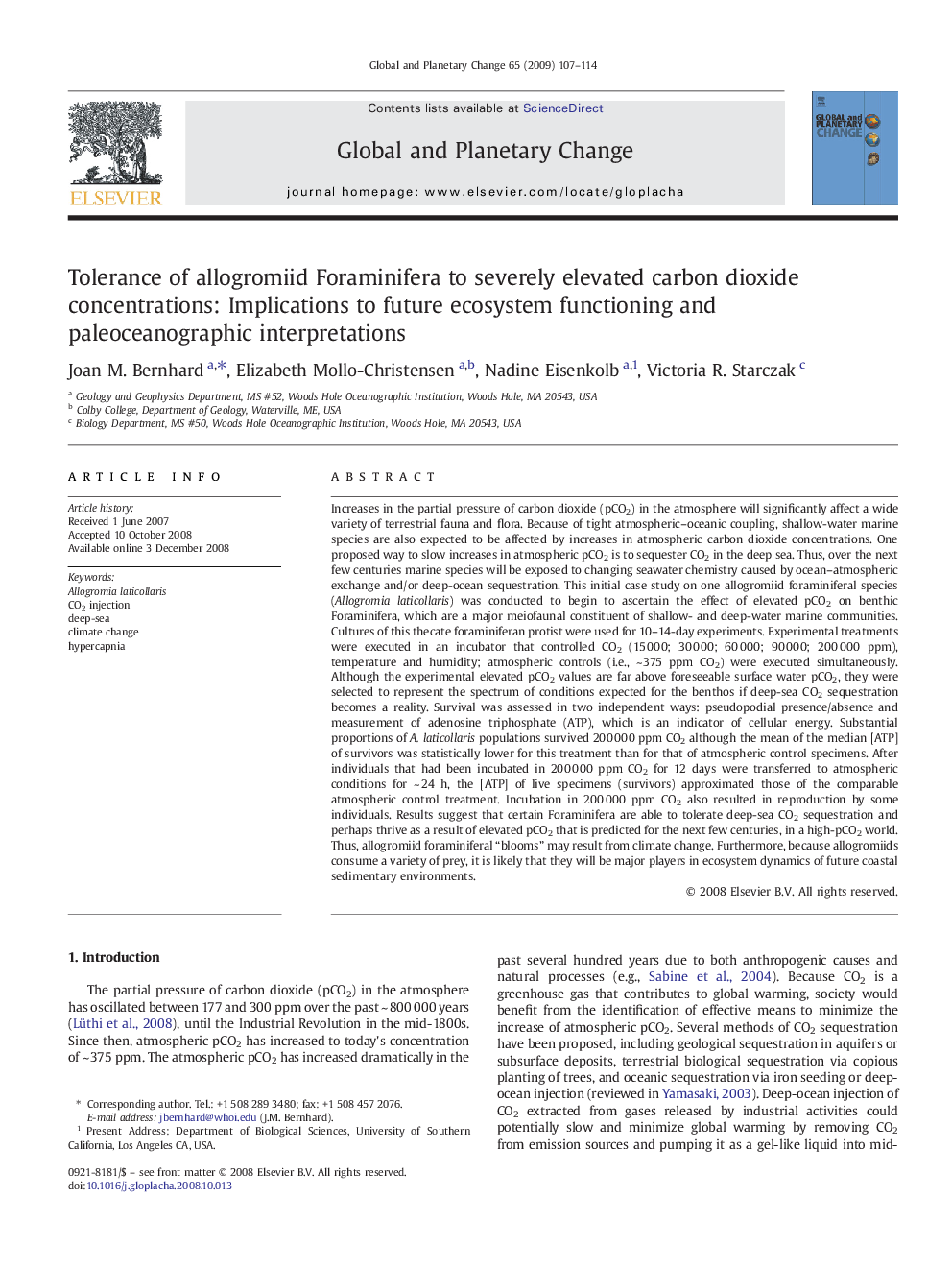| کد مقاله | کد نشریه | سال انتشار | مقاله انگلیسی | نسخه تمام متن |
|---|---|---|---|---|
| 4464141 | 1621715 | 2009 | 8 صفحه PDF | دانلود رایگان |

Increases in the partial pressure of carbon dioxide (pCO2) in the atmosphere will significantly affect a wide variety of terrestrial fauna and flora. Because of tight atmospheric–oceanic coupling, shallow-water marine species are also expected to be affected by increases in atmospheric carbon dioxide concentrations. One proposed way to slow increases in atmospheric pCO2 is to sequester CO2 in the deep sea. Thus, over the next few centuries marine species will be exposed to changing seawater chemistry caused by ocean–atmospheric exchange and/or deep-ocean sequestration. This initial case study on one allogromiid foraminiferal species (Allogromia laticollaris) was conducted to begin to ascertain the effect of elevated pCO2 on benthic Foraminifera, which are a major meiofaunal constituent of shallow- and deep-water marine communities. Cultures of this thecate foraminiferan protist were used for 10–14-day experiments. Experimental treatments were executed in an incubator that controlled CO2 (15 000; 30 000; 60 000; 90 000; 200 000 ppm), temperature and humidity; atmospheric controls (i.e., ~ 375 ppm CO2) were executed simultaneously. Although the experimental elevated pCO2 values are far above foreseeable surface water pCO2, they were selected to represent the spectrum of conditions expected for the benthos if deep-sea CO2 sequestration becomes a reality. Survival was assessed in two independent ways: pseudopodial presence/absence and measurement of adenosine triphosphate (ATP), which is an indicator of cellular energy. Substantial proportions of A. laticollaris populations survived 200 000 ppm CO2 although the mean of the median [ATP] of survivors was statistically lower for this treatment than for that of atmospheric control specimens. After individuals that had been incubated in 200 000 ppm CO2 for 12 days were transferred to atmospheric conditions for ~ 24 h, the [ATP] of live specimens (survivors) approximated those of the comparable atmospheric control treatment. Incubation in 200 000 ppm CO2 also resulted in reproduction by some individuals. Results suggest that certain Foraminifera are able to tolerate deep-sea CO2 sequestration and perhaps thrive as a result of elevated pCO2 that is predicted for the next few centuries, in a high-pCO2 world. Thus, allogromiid foraminiferal “blooms” may result from climate change. Furthermore, because allogromiids consume a variety of prey, it is likely that they will be major players in ecosystem dynamics of future coastal sedimentary environments.
Journal: Global and Planetary Change - Volume 65, Issues 3–4, February 2009, Pages 107–114